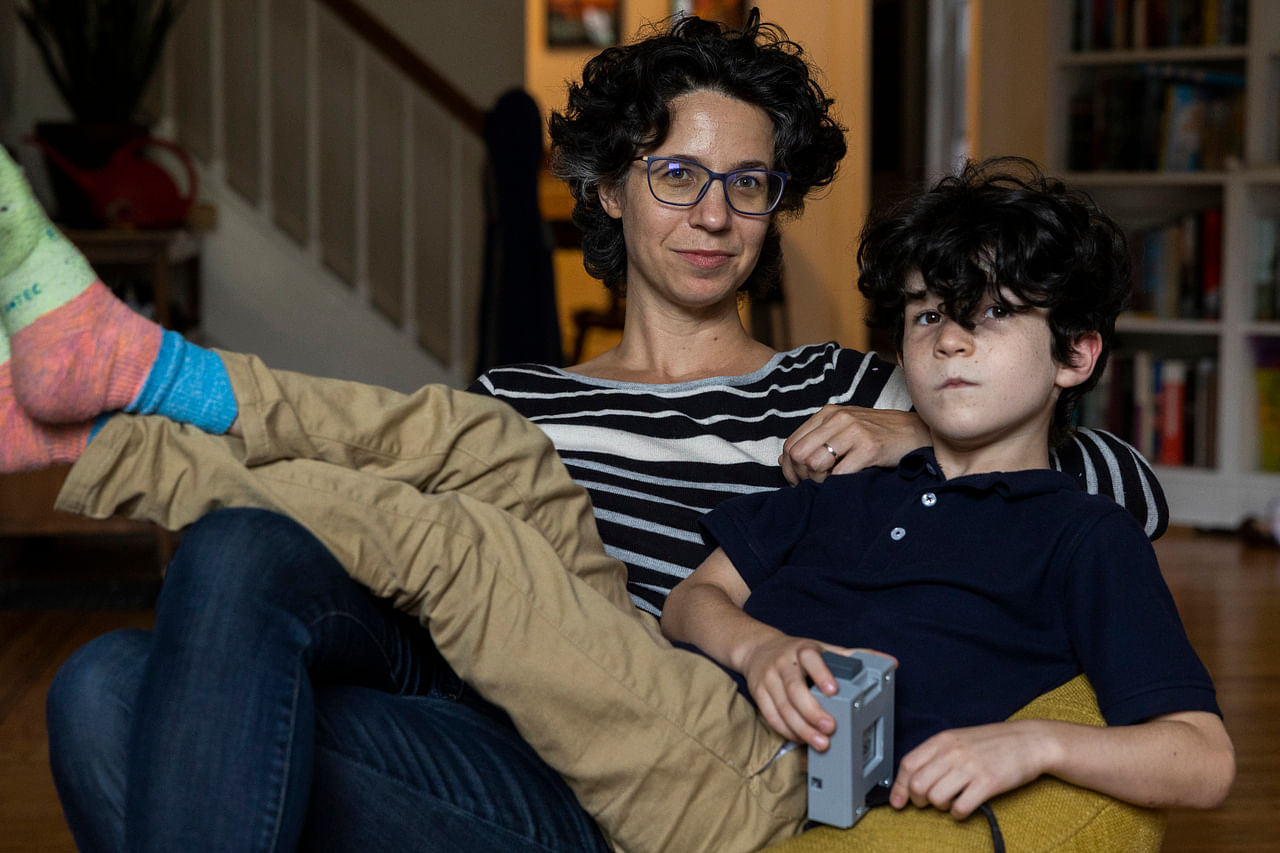NEW YORK (NYTIMES) - When Ms Lizzie Rothwell, an architect in Philadelphia, sent her son to third grade this autumn, she stocked his blue backpack with pencils, wide-ruled paper - and a portable carbon dioxide monitor.
The device gave her a quick way to assess how much fresh air was flowing through the school. Low levels of CO2 would indicate that it was well ventilated, reducing her son's odds of catching the coronavirus.
But she quickly discovered that during lunch, CO2 levels in the cafeteria rose to nearly double those recommended by Centres for Disease Control and Prevention. She shared what she had learnt with the principal and asked if students could eat outside instead.
"He expressed surprise that I had any data at all," she said.
Ms Rothwell is one of a growing number of parents who are sneaking CO2 monitors into schools in a clandestine effort to make sure their children's classrooms are safe. Aranet, which makes a monitor popular with parents, says orders have doubled since the new school year began.
Some school systems have made the monitors part of their official pandemic precautions. New York City has distributed the devices to every public school, and the British government has announced plans to do likewise.
But elsewhere, parents are taking matters into their own hands, sneaking in the monitors - which can cost US$100 (S$136) or more - in their children's backpacks or pants pockets.
Although the devices, which can be set to take readings every few minutes, work best when exposed to the open air, they can generate informative data as long as they are not completely sealed away, said Dr Alex Huffman, an aerosol scientist at the University of Denver who has sent the monitors to school with his children. (He recommended leaving backpacks or pants pockets unzipped, or tucking the monitor into the mesh water-bottle pouch that is now standard on many backpacks.)
The coronavirus spreads through tiny, airborne droplets known as aerosols. Improving indoor ventilation reduces the concentration of these aerosols and the risk of infection in an indoor space, but there is no easy way for members of the public to measure the ventilation rate - let alone the accumulation of viral aerosols - in shared spaces.
"Ideally, there'd be some machine that cost US$100, and it starts beeping if the virus is in the air," said University of Colorado Boulder's aerosol scientist Jose-Luis Jimenez, who is sending a carbon dioxide monitor to school with his son.
But in the absence of such a device, he said, "CO2 is something that provides an affordable and very meaningful shortcut". Every time we exhale, we expel not just aerosols but also carbon dioxide; the worse the ventilation, the more carbon dioxide builds up in an occupied room.
"If we see the CO2 rising, then that also implies that the concentration of aerosols are rising," Dr Huffman said. "Even just bringing sensor for a day or two can give you a really interesting and useful window into the world of the ventilation of that space."

Ms Jeanne Norris, who lives in the St. Louis area, said she bought her monitor after losing confidence in officials in her son's school district.
"They just hadn't been very transparent about their ventilation," she said. "They say that it's fine and that they did their own testing, but then they wouldn't share that data with me."
Ms Norris and her husband are both science teachers, and, so far, their data suggest that the ventilation is excellent in both of their classrooms. But CO2 levels in her son's classroom sometimes surpass 1,300 parts per million. The CDC recommends that indoor carbon dioxide levels remain below 800 ppm.
After she collects more data, she plans to take her findings to school officials and ask them to improve the ventilation.
"I'm willing to be creative and brainstorm with them," she said.

Some parents have received results. When Mr Jeremy Chrysler sent a monitor in with his 13-year-old daughter this autumn, the CO2 readings were a sky-high 4,000 ppm.
He brought his findings to district officials, who discovered that two components of the school's heating, ventilation and air conditioning system were not working properly. After the units were fixed, CO2 levels plummeted.
"What my measurements showed was, hey, measuring CO2 can identify problems, and, sometimes, those problems are easy to fix," he said.

